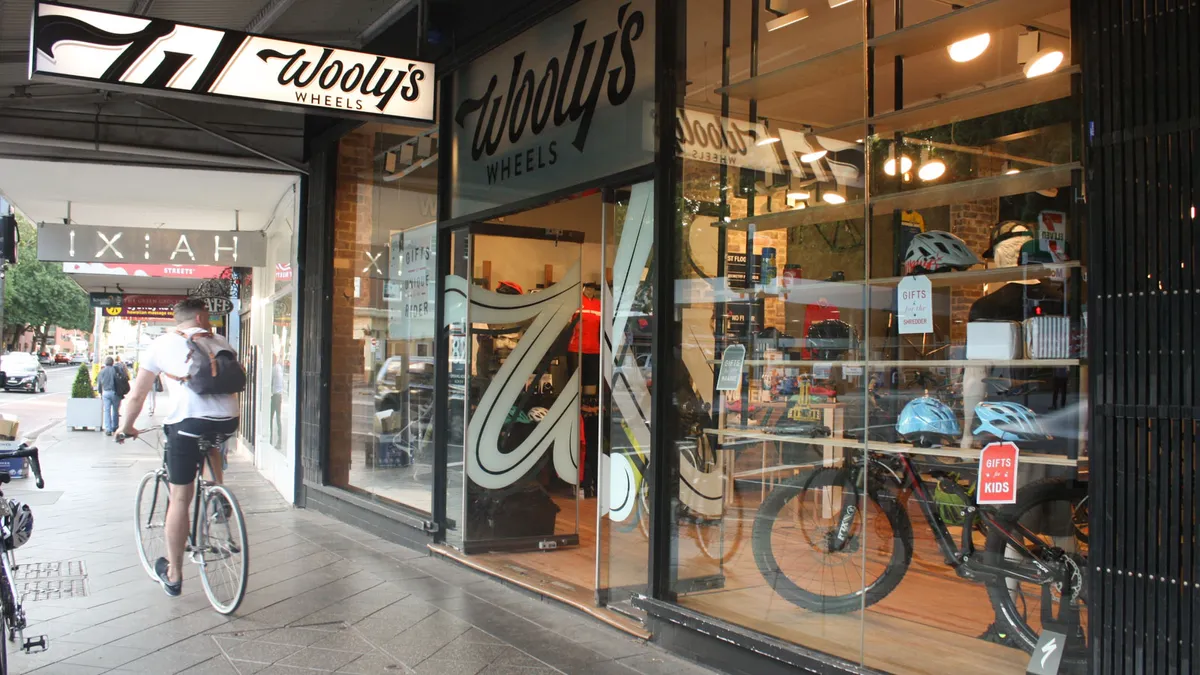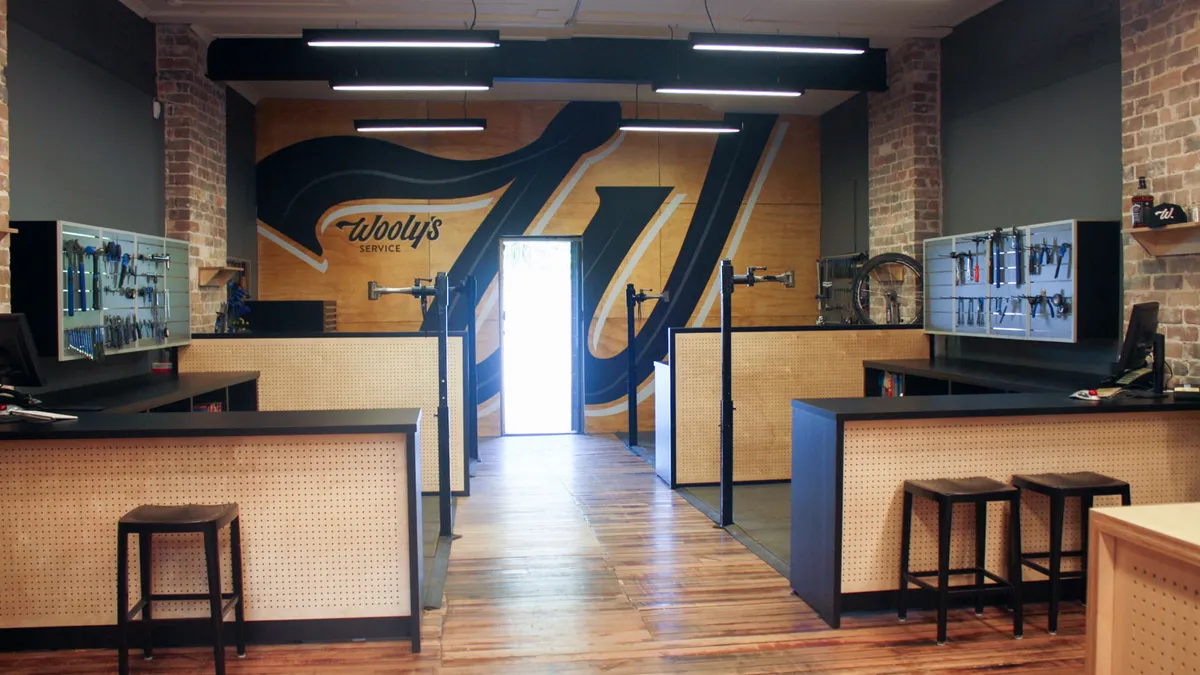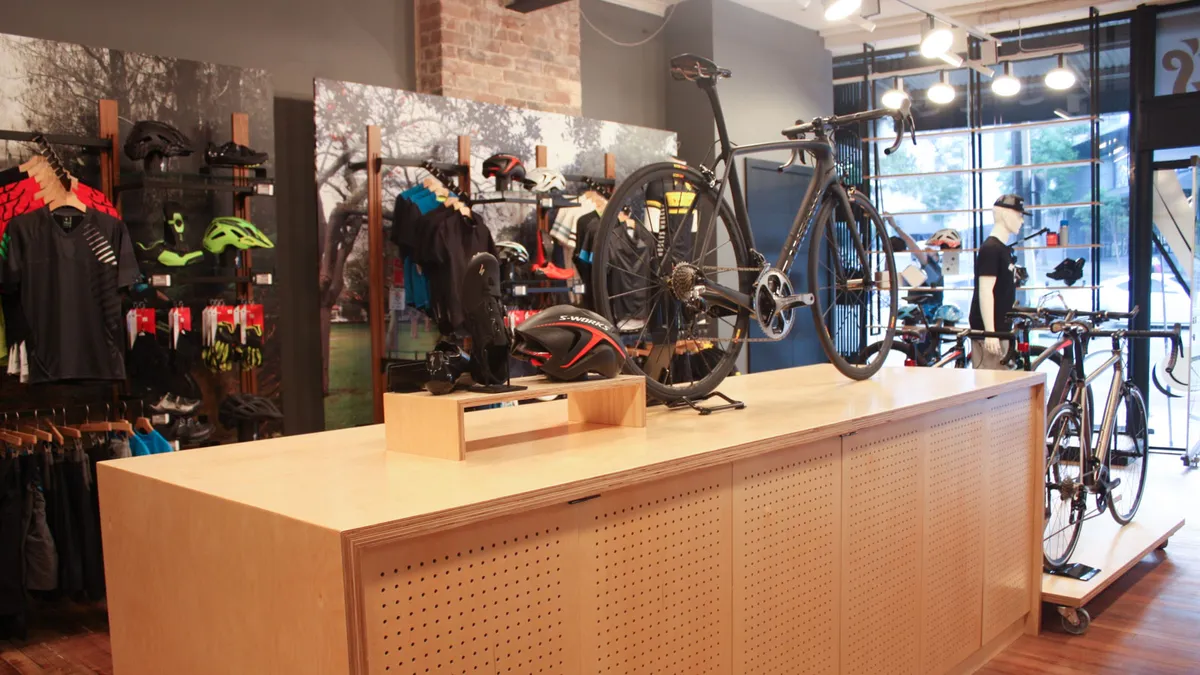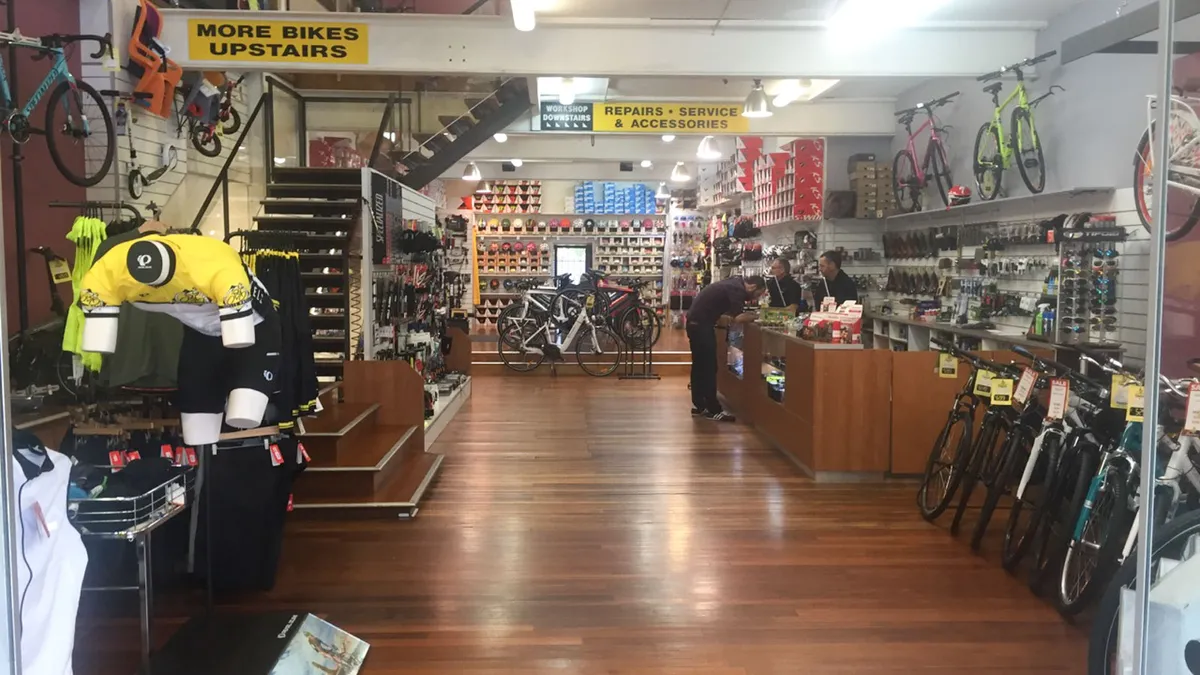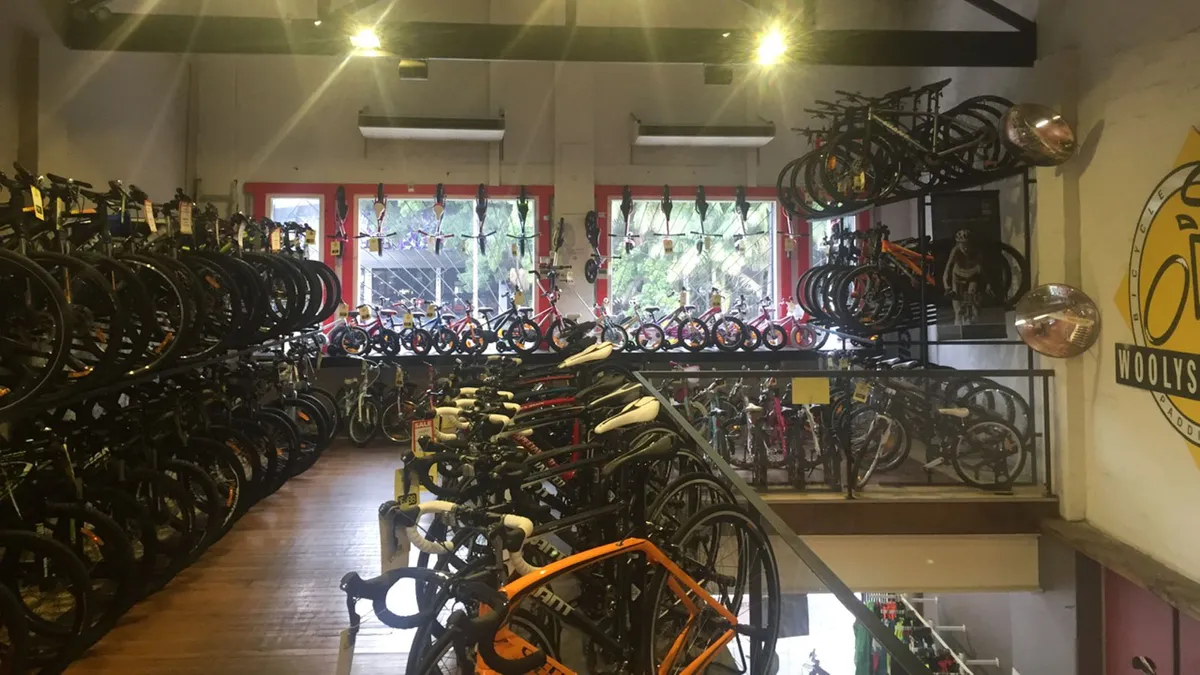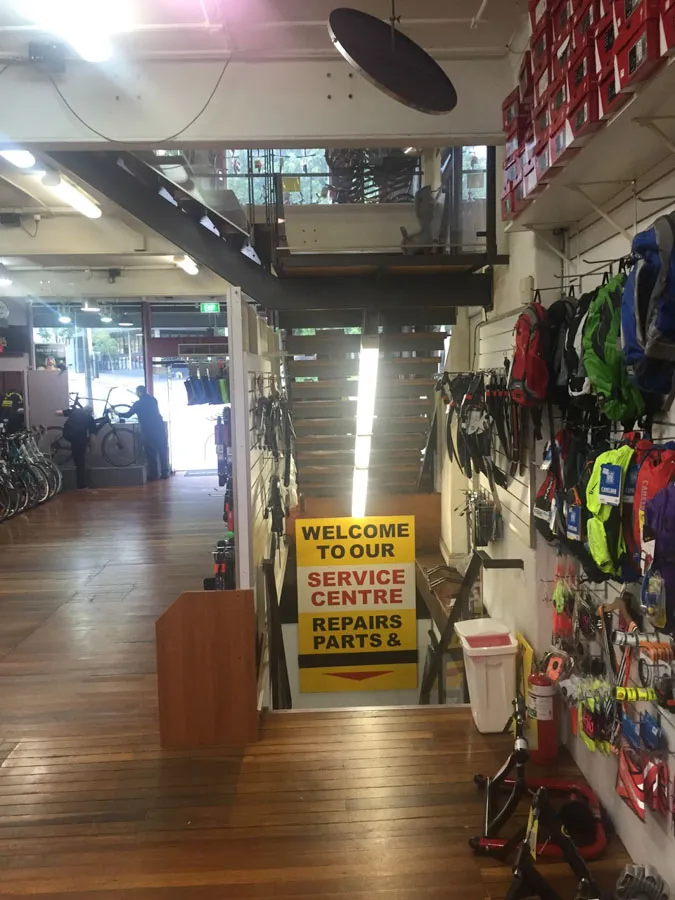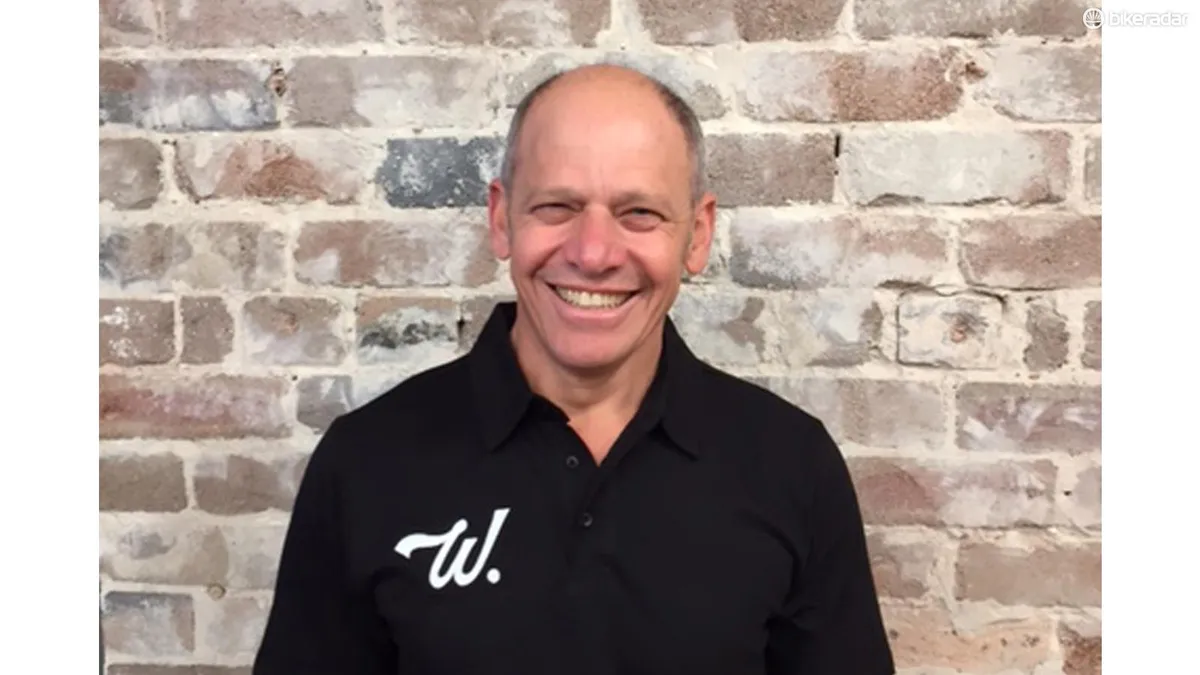There’s no denying it, retail is changing and the traditional bricks and mortar stores have had to transform, modernise and re-create their competitive offering; or fade softly into the distance.
The bike industry is without question a part of retail that has gone though grand change in recent years, and with the likes of Trek and Giant announcing consumer-direct sale options, and online retail super powers such as Wiggle and Chain Reaction merging, plenty of change seemingly still awaits.
Related: Wiggle to merge with Chain Reaction Cycles
Australia is one country that’s been hit extremely hard by international purchasing options and many institutional shops have changed greatly, or just shut their doors as a result. Opening some 37 years ago in the heart of Sydney, Wooly’s Wheels is one of the biggest bike stores in Sydney, spanning three floors. Where most retailers across Australia became single-brand focused, Wooly’s remained one of the few multi-brand outlets selling Specialized, Giant and others.
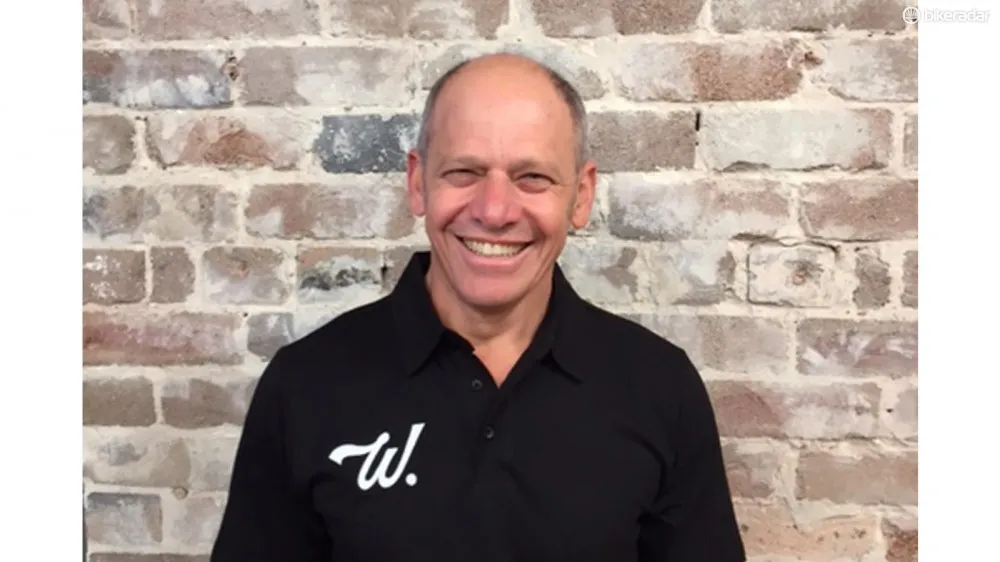
Michael Karmahl, founder and owner of Wooly's Wheels
However, this seems to be changing and the store is perhaps becoming more specialized (pun intended) than before. With a significant store overhaul just completed, we asked founder and still-store owner Michael Kamahl for his insights into the changing landscape of cycling retail.
BikeRadar: When and how did the store initially start?
Michael Kamahl: I had worked for Tony Cook for several years at Clarence Street Cyclery as a mechanic, and then had a short stint doing repair work for UNSW students out of my station wagon. I might have been Sydney’s first mobile mechanic! A mate then suggested that I look at a retail space available for lease on Oxford Street he thought I could start my own store in.
It was 1979 and cycling was gaining a larger profile in Australia, and I had already made the area my home. It seemed a natural fit at the time, and though it was certainly a big risk for a young man, I jumped in with both feet. I lived in the back of the shop for a time to help keep it manageable, and my old friends and I had some amazing times, but it was certainly touch and go for a while!
At that time, how many other bike shops would you say were in greater Sydney?
That’s difficult to say, in part because Sydney was a very different place 36 years ago! In the immediate area it really came down to Clarence Street Cyclery of course, and Europa was a big store at the time. There was another strong store at Parramatta called Universal, but unfortunately that has now gone. My old mate John Michelle at Ashfield Cycles has certainly been around for a long time too.
What do you find most different about customers now compared to customers 30 years ago?
Many things, and I think some of them are broader cultural shifts rather than changes particular to cyclists. Sydney residents seem to have become more urgent and particular, so the emphasis is more and more focused on quality and efficiency of service.

What the Oxford Street cycle store looked like prior to renovations
Having the right product in stock and ready to go has always been a driving concern, but getting that mix right has become harder as people have become aware of more choice and technical information, both through increased local competition and online retailers. The compulsion to read every existing review on any given product is certainly part of this! There’s probably less ‘tyre kicking’ now than before though, as riders generally come into the store better informed with lots of prior research under their belts.
Ultimately, there’s things that haven’t changed too – riders still enjoy making connections with other riders in spaces dedicated to all things bikes, we love seeing and touching exciting cycling products, and expert service is timeless.
Do you think bicycle retail has become tougher in recent years? If so, what do you attribute that to?
Yes, without doubt. There’s no excuse to complain or be bitter though; it’s an opportunity to get better, to differentiate yourself from other stores, and to keep evolving to the needs of the riders you serve. In a nutshell, I’d say the increased strain comes from three things.
The first is the widening of the cycling market across diverse rider segments, and the competition of other stores (or manufacturers) that do really well focusing on segments that were once primed for strong sales for stores like mine – for this, look no further than Cell or Reid Cycles.
The second is online retailing, as the choice and pricing obviously closes brick and mortar businesses out of sales for a decent chunk of buyers for thousands of products. However, I’ve got to say that while this is an obvious challenge for us, we believe that there is still a lot of room for traditional retailers to exist in the same sphere and offer something that enough riders will value to make the difference.
The third and last is increased competition from a surplus of cycling retailers, and a negative culture of price competitiveness that this breeds among many products and services on offer. We foresee this stabilising in the coming years as the industry continues its period of change.
You're just about to open a store, what advice would you give your 20ish-year old self now?
That’s hard, because 20-ish year old me was a beast of another time and space! Transport that guy to the mid 2010s, and I’d say focus more on the riders and less on yourself. Invest time in getting to know and understand people, build relationships, and invest more in community.
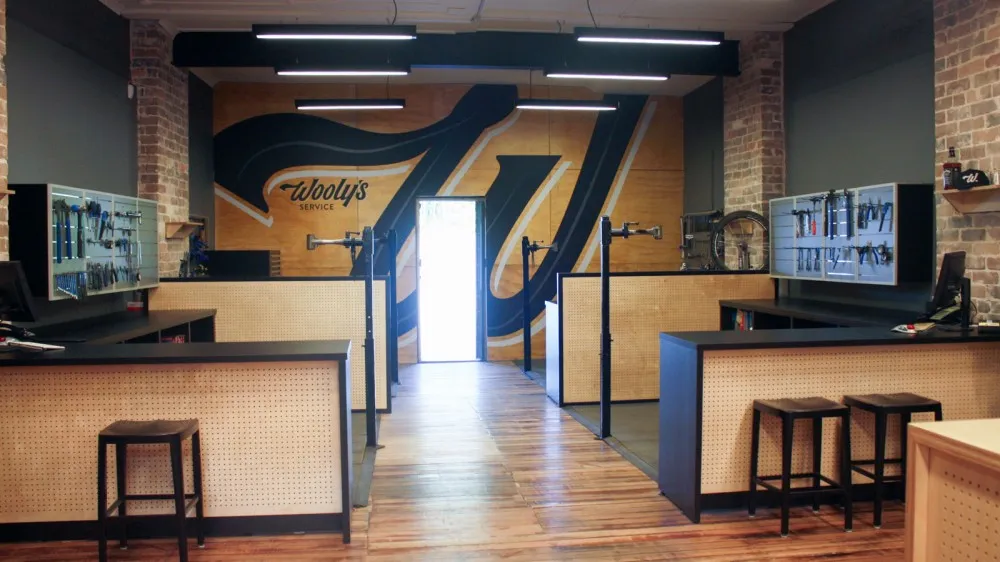
The new store features a larger workshop with open access for customers
The support we received through the renovation was absolutely fantastic and inspiring, but now more than ever you can’t run a great bike store without focusing on the experiences of your customers first and foremost.
We’ve heard it from other retailers, but has your workshop become a more crucial aspect of the store in recent years?
They’re right! I suppose it goes without saying that service can’t be bought online and with a good team of technicians on deck, you’ll soon distinguish yourself from your competitors. I’ve learned it through experience in recent years, as we moved away from a team of workshop guys that didn’t put the rider first and weren’t concerned by the needs of Wooly’s Wheels as an all-around business beyond their own requirements.
I was lucky to have Nat Richards and Nick Curtis join my staff about four years ago, and these guys turned my workshop into a powerhouse. Happy riders, smooth operation, motoring the supply of new bikes along, and they became the most effective overall staff I had in no time. They’re a big reason why we’ve now brought the workshop onto the street level in full view of the front windows. The workshop and its energy is key to what we do and what we value, and we want our riders to see and value that on every visit.
You have fewer brands now. Do you think this more focused strategy is the future for bicycle retail?
Yes. Nat and I have worked hard to give the new store that old school sense of destination that characterised the dream shop of the 90s and 00s, but ultimately there’s much to be said for aligning with one of the few global brands that service riders well across multiple experience segments and that help retailers like me attain excellent levels of customer service.
We are privileged to have Specialized supporting us during this period of change, as we truly believe that they create a range of bicycle components that offer our riders more than pretty much any other brand brings to the table. Across road, mountain and fitness/commute, there’s nothing but investment, technology, attention to detail and support.
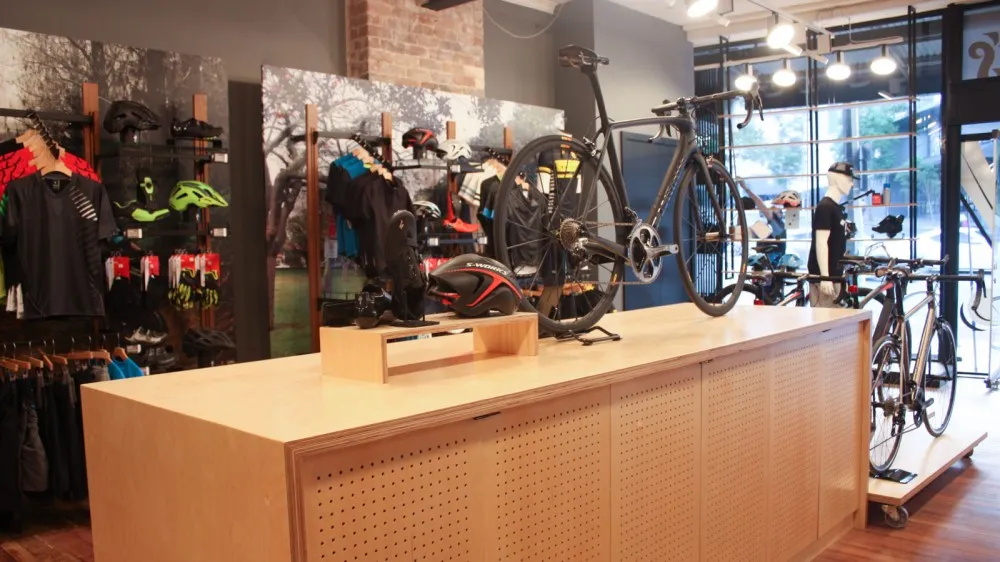
Specialized has helped with the fit-out – a common trend in the Australian retail scene
There’s little reason to squeeze other brands in there for the illusion of depth, except where genuine alternatives offer something unique. That’s why we’ll continue to stock and promote awesome niche brands like Enigma titanium bikes, Soma steel bikes, Mavic wheels, and whatever else gets us excited in a way that should equally excite riders that visit our store.
Based in an urban area, you have traditionally been a strong seller of commuter-type bikes. When did you experience the shift in demand toward high-end recreational bikes?
The association between commuter bikes and Wooly’s Wheels is not wrong, but I think has been a little overstated. To be sure, Wooly’s has historically done well selling bikes generally classified under the ‘hybrid’ banner, but it has been easy to look past our heritage in more performance-orientated bikes of all stripes. We may never be synonymous with racing, but road and mountain bikes from the entry to the dream level have always been important to my store through the years. Within my brand range, if a rider wanted to see the ‘bling’ bike in the flesh, I’ve long prided myself on making it possible.
It is true though that the shift toward the mid-to-high-end bike has occurred within the last five years, and again I’d ascribe this to three factors.
Firstly, brands like Specialized, Enigma and Soma are particularly strong in this market, and riders after this product seek us out in search of bikes they understand to meet their expectations of quality and performance. And we’re happy with that!
It’s also true enough that other local retailers are offering increasingly competitive bikes and accessories to that ‘hybrid’ market, to a point that any store like mine can only reach so many riders to communicate the various benefits our products may offer at a higher price.
Lastly, we’re choosing to invest more in serving our local community. The Eastern Suburbs are made up of keen road and mountain bikers that rightly demand great cycling products for their leisure and training time, but there is a commute/fitness side to that we’re eager to continue to support. One of our main aims is to see less men and women riding into the city in full team kit on their drops or clip on bars, but instead wearing technical utility apparel on bikes that are more practical and are better suited to eating up those rough miles than their performance bikes.
What keeps you driven to keep pushing forward in the industry?
It’s actually pretty simple for me. I love my store, I love the hustle and bustle of people coming through and the connections that are made. I love working with a close-knit team that shares my goals and supports me, and the sense of belonging and family that comes from this. And, I love bikes!
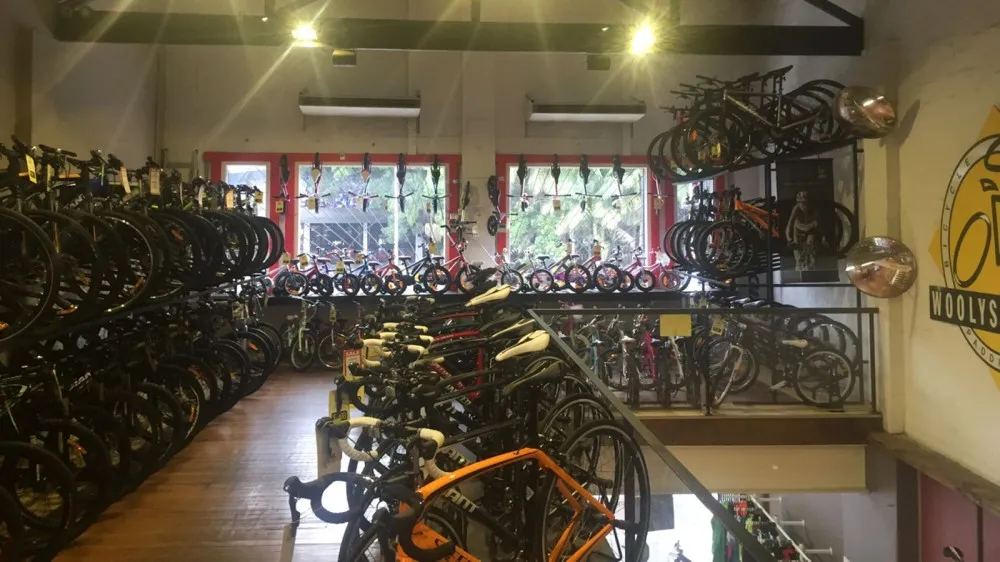
Certainly a thing of the past – bikes cluttered and customers are forced to wait for help in order to see something
I’ve worked hard for decades, but I have never felt that I’ve been weighed down by my job and the lifestyle it brings. Cycling is a hugely positive force, and it’s a pleasure to serve riders that feel the same way.
How important is online sales to your business?
Not particularly. We offer basic items for sale online that are mostly oriented toward children, and of course gift vouchers are a very practical online sale. Beyond that, we’ve learned that there are businesses both local and overseas that work more efficiently through this medium that we ever could while maintaining the quality of our brick and mortar operation, and that’s OK. They can do their thing, and we’ll do ours.
What do you foresee as the biggest threat to face the Australian bike industry moving forward?
With the scope and pace of change in the last 10 years it might be easy to sound silly here! Rather than one big threat, I think there will be Australian retailers go by the wayside due to a few factors.
The continued expansion of online buying will create more pressure as retailers like Wiggle improve delivery speed, and internet-focused bike manufacturers like Canyon entering the local market will certainly present a new threat that I’m sure will be interesting to follow.
By and large though, I think the threat is internal. There’s a lot of bike stores in Sydney that have emerged through the earlier boom that will continue to be pinched by tighter margins, increased rider expectations, and the need to run their businesses in a more financially attentive manner. I believe we may be facing a coming period of attrition, and in this respect the Australian bike industry is not unlike any other industry that experiences fluctuations over time.
What do you foresee as the biggest opportunity for the greater Australian bike industry moving forward?
It’s simply the opportunity to do better. If stores will close and riders will buy online, those that survive and proposer will be the stores that offer their riders class-leading products, excellent retail experiences, standout service and more opportunities to meaningfully engage with their businesses.
This realisation has driven the changes to my store fit out, the changes to our structure and operations, as well as my investment in staff. There’s hard work for us down the line, but nothing good comes easy. That’s more advice for 20-ish me!
